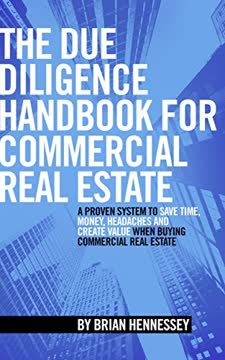Key Takeaways
1. Due diligence is crucial for successful commercial real estate investment
The whole purpose of the due diligence process is to discover the potential problems with a property, reveal any hidden profit potential, and to verify all information that you have obtained.
Importance of due diligence: Thorough due diligence is essential for making informed investment decisions in commercial real estate. It helps investors uncover potential issues, identify hidden value, and verify all information provided by sellers. By conducting comprehensive due diligence, investors can:
- Minimize risks associated with property acquisition
- Negotiate better terms based on discovered information
- Avoid costly surprises after closing
- Maximize the potential return on investment
Key components of due diligence:
- Physical property inspection
- Financial analysis and underwriting
- Legal and regulatory compliance review
- Market and competitive analysis
- Environmental assessment
2. Thoroughly review leases and operating expenses during negotiations
Review carefully all service contracts in effect to make sure that they are cancelable with 30 or 60-days' notice. Make special note of any that is self-renewing for long terms such as one year or longer.
Lease review: Carefully examining lease documents is critical to understanding the property's income potential and potential liabilities. Key aspects to review include:
- Rental rates and escalations
- Tenant improvement allowances
- Renewal and termination options
- Operating expense pass-throughs
- Special provisions or concessions
Operating expense analysis: Scrutinize historical operating expenses to identify:
- Trends in major expense categories
- Opportunities for cost reduction
- Unusual or one-time expenses
- Comparison to market benchmarks
By thoroughly reviewing leases and operating expenses, investors can better understand the property's financial performance and identify potential areas for improvement or negotiation.
3. Conduct comprehensive physical and mechanical inspections
I can usually tell very quickly how a building is being maintained by the way these various places are maintained; their cleanliness and orderliness, and how organized everything is.
Importance of inspections: Thorough physical and mechanical inspections are crucial for understanding the property's condition and potential future capital expenditures. Key areas to inspect include:
- Roof and building envelope
- HVAC systems
- Elevators
- Electrical systems
- Plumbing
- Fire and life safety systems
Inspection process:
- Engage qualified professionals for specialized inspections
- Review maintenance records and capital expenditure history
- Identify deferred maintenance items
- Estimate remaining useful life of major building systems
- Develop a capital expenditure budget for necessary repairs and replacements
By conducting comprehensive inspections, investors can better understand the property's physical condition and plan for future capital needs.
4. Engage with tenants, property managers, and leasing brokers
Much can be uncovered during the interview regarding their tenancy and experience in the building, as well as the submarket area in general. Many tenants will give you a wealth of information, if you give them the right questions to respond to.
Tenant interviews: Engaging with existing tenants provides valuable insights into:
- Satisfaction with the property and management
- Plans for renewal or expansion
- Operational issues or concerns
- Market perception of the property
Property management discussions: Speaking with current property managers helps uncover:
- Day-to-day operational challenges
- Tenant relations and history
- Building systems performance
- Opportunities for improvement
Leasing broker engagement: Consulting with local leasing brokers provides:
- Market trends and rental rate information
- Competitive property analysis
- Tenant demand and preferences
- Leasing strategy recommendations
By engaging with these key stakeholders, investors gain a more comprehensive understanding of the property's strengths, weaknesses, and market position.
5. Scrutinize financial statements and underwriting assumptions
Underwriting is an ongoing process during your due diligence and beyond, until closing. Even then, you'll be looking back to see how accurate your analysis was during the time you own the property.
Financial statement analysis: Carefully review historical financial statements to:
- Verify income and expense trends
- Identify unusual or non-recurring items
- Assess the accuracy of reported information
- Compare performance to market benchmarks
Underwriting assumptions: Develop and critically evaluate key assumptions, including:
- Future rental rates and growth
- Vacancy and credit loss projections
- Operating expense inflation
- Capital expenditure requirements
- Exit cap rate and sales price
Sensitivity analysis: Conduct scenario and sensitivity analyses to understand:
- Impact of changes in key variables on returns
- Downside risks and potential mitigations
- Break-even points for critical assumptions
By scrutinizing financial statements and underwriting assumptions, investors can develop a more accurate projection of future performance and potential returns.
6. Address critical issues specific to different property types
Each property type has its unique qualities and issues that should be investigated or addressed.
Office properties:
- Tenant mix and industry diversification
- Parking ratios and accessibility
- Building efficiency and floor plate design
- Technology infrastructure and connectivity
Industrial properties:
- Ceiling heights and column spacing
- Loading dock configuration and truck access
- Power capacity and distribution
- Environmental considerations
Retail properties:
- Traffic counts and visibility
- Tenant sales performance
- Co-tenancy clauses and anchor tenant stability
- Parking ratios and site layout
Multifamily properties:
- Unit mix and amenities
- Rental rates compared to market
- Operational efficiency metrics
- Local demographic trends and demand drivers
By addressing property type-specific issues, investors can better understand the unique risks and opportunities associated with each asset class.
7. Finalize the transaction with careful attention to closing details
One of the most important items in due diligence is to properly review the closing statement prepared by escrow before finalizing the transaction. If you're not careful in scrutinizing it, it can cost you dearly.
Closing statement review: Carefully examine the closing statement to ensure:
- Accurate prorations of income and expenses
- Proper allocation of closing costs
- Inclusion of all agreed-upon credits and debits
- Verification of deposit amounts and loan proceeds
Final due diligence items:
- Review and approval of title insurance commitment
- Confirmation of property insurance coverage
- Execution of tenant estoppel certificates
- Completion of any outstanding third-party reports
Post-closing considerations:
- Transition of property management and leasing
- Communication with tenants regarding new ownership
- Implementation of planned operational improvements
- Execution of value-add strategies identified during due diligence
By paying careful attention to closing details and post-closing considerations, investors can ensure a smooth transaction and set the stage for successful property ownership.
Last updated:
FAQ
1. What’s "The Due Diligence Handbook For Commercial Real Estate" by Brian Hennessey about?
- Comprehensive due diligence guide: The book provides a step-by-step system for conducting thorough due diligence when buying commercial real estate, based on the author’s 30+ years of industry experience.
- Practical tools and checklists: It includes actionable checklists, sample forms, and real-world advice to help investors, brokers, and professionals avoid costly mistakes.
- Covers all property types: The principles apply to office, industrial, retail, and multi-family properties, making it a universal reference for commercial real estate transactions.
- Focus on risk reduction and value creation: The handbook emphasizes uncovering hidden problems, verifying information, and identifying value enhancers to make informed investment decisions.
2. Why should I read "The Due Diligence Handbook For Commercial Real Estate" by Brian Hennessey?
- Avoid costly mistakes: The book helps readers prevent expensive errors and post-closing surprises by teaching a proven due diligence process.
- Gain a competitive edge: It equips brokers and investors with knowledge that sets them apart from competitors, adding value for clients and reducing litigation risk.
- Learn from real experience: Hennessey shares lessons learned from over 9 million square feet of acquisitions, including mistakes and best practices.
- Suitable for all levels: Whether you’re a beginner or a seasoned pro, the book offers insights, reminders, and advanced strategies to refine your due diligence skills.
3. What are the key takeaways from "The Due Diligence Handbook For Commercial Real Estate"?
- Systematic approach is essential: Using a structured process and checklists ensures nothing falls through the cracks during due diligence.
- Verify everything: Never assume information is accurate—always confirm leases, financials, physical conditions, and legal documents.
- Communication and documentation: Keep all communications in writing and develop a tracking system to follow up on outstanding issues.
- Value creation and risk mitigation: Proper due diligence not only uncovers problems but also reveals opportunities to enhance property value and negotiate better deals.
4. What is Brian Hennessey’s proven due diligence system for commercial real estate?
- Step-by-step process: The system guides readers from pre-contract negotiations through closing, covering legal, financial, physical, and operational aspects.
- Use of checklists and forms: The book provides detailed checklists for documents, inspections, and interviews to ensure comprehensive coverage.
- Team coordination: Emphasizes the importance of clear roles, open communication, and accountability among all team members involved in the transaction.
- Continuous review: Encourages ongoing verification and updating of findings throughout the due diligence period, not just at the beginning.
5. What are the most common mistakes investors make during due diligence, according to the book?
- Lack of a system: Many investors perform due diligence haphazardly, leading to missed items and increased risk.
- Poor documentation: Failing to track questions and responses can result in unresolved issues and weak negotiation positions.
- Inadequate lease and financial review: Not digging deep into leases, tenant files, and financial records can hide significant liabilities or lost income.
- Overlooking physical and legal issues: Ignoring building code violations, permit problems, or physical defects can lead to expensive surprises after closing.
6. How does "The Due Diligence Handbook For Commercial Real Estate" recommend reviewing leases and tenant information?
- Create lease abstracts: Summarize key lease terms, concessions, options, and obligations using the sample form provided in the book.
- Identify red flags: Look for early termination clauses, rent abatements, outstanding tenant improvements, and unusual lease provisions that could impact value.
- Verify tenant files: Review all correspondence and service requests to uncover hidden issues or disputes.
- Conduct tenant interviews: Use the sample questionnaire to gather candid feedback on building conditions, landlord responsiveness, and potential problems.
7. What physical and mechanical inspections are critical in Brian Hennessey’s due diligence process?
- Inspect all major systems: Evaluate HVAC, elevators, roofs, fire/life safety systems, water heaters, and electrical panels for age, condition, and compliance.
- Look for tell-tale signs: Assess cleanliness and organization of mechanical rooms, check for rust, leaks, or deferred maintenance, and verify maintenance logs.
- Specialized tests: Consider energy audits, thermoscans, and eddy current tests for deeper insights into system efficiency and potential issues.
- Don’t skip any spaces: Insist on walking every suite, unit, or room to verify occupancy, condition, and to uncover hidden problems.
8. How does the book advise handling financial analysis and underwriting during due diligence?
- Analyze net operating income (NOI): Review current and historical NOI, occupancy trends, and rent rolls to assess property performance.
- Compare expenses: Benchmark operating expenses against similar properties and investigate any discrepancies or unusual trends.
- Review CAM reconciliations: Understand how common area maintenance charges are calculated and passed through to tenants.
- Factor in future risks: Account for upcoming lease rollovers, capital expenditures, code compliance costs, and market conditions in your financial projections.
9. What are the unique due diligence considerations for industrial, retail, and multi-family properties in the book?
- Industrial: Assess utility capacities, loading docks, zoning, site access, and potential environmental issues specific to industrial use.
- Retail: Evaluate demographics, tenant mix, parking adequacy, signage, exclusivity clauses, and the impact of e-commerce trends.
- Multi-family: Investigate vacancy rates, tenant mix, rent control, security, amenities, and local regulations affecting residential properties.
- Tailor questions: The book provides property-type-specific checklists and suggests consulting local experts for nuanced insights.
10. What negotiation strategies and tips does Brian Hennessey offer for buyers in commercial real estate transactions?
- Address issues early: Confront major lease or physical issues during negotiations to avoid wasting time on unsolvable problems.
- Use findings for leverage: Present documented issues and repair estimates to justify price reductions or credits before contingencies are removed.
- Have a walk-away position: Define your ideal, target, and maximum price to maintain objectivity and negotiation strength.
- Document everything: Keep all requests, agreements, and concessions in writing to avoid disputes and ensure enforceability.
11. What are the most valuable checklists and sample forms included in "The Due Diligence Handbook For Commercial Real Estate"?
- Due Diligence Checklist: A comprehensive list covering property information, tenant data, financials, and general items to request and review.
- Due Diligence Document Checklist: Ensures all critical documents—surveys, reports, permits, contracts, and financials—are collected and verified.
- Sample Lease Abstract Form: Helps summarize and compare key lease terms across tenants.
- Sample Tenant Questionnaire: Provides a template for conducting effective tenant interviews to uncover hidden issues.
12. What are the best quotes from "The Due Diligence Handbook For Commercial Real Estate" and what do they mean?
- “Assume Nothing.” – Emphasizes the importance of verifying every detail rather than taking information at face value.
- “Sometimes the best deals are the ones you don’t do.” – Reminds investors that walking away from a problematic property can save money and headaches.
- “If you don’t ask, the answer is always ‘NO’.” – Encourages proactive questioning and negotiation to uncover issues and secure better terms.
- “We need reminding as much as we need learning.” – Highlights the value of checklists and reference tools, even for experienced professionals, to avoid costly oversights.
Review Summary
The Due Diligence Handbook For Commercial Real Estate receives high praise for its practical, step-by-step approach to commercial real estate transactions. Readers appreciate its concise format, comprehensive checklists, and real-world insights. Many find it invaluable for both beginners and experienced investors, highlighting its ability to prevent costly mistakes. Some reviewers note its focus on pre-sale processes, while others suggest it could benefit from more detailed explanations. Overall, the book is widely recommended as an essential resource for anyone involved in commercial real estate purchases.
Similar Books
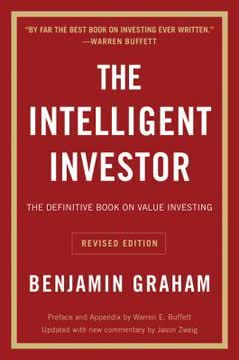
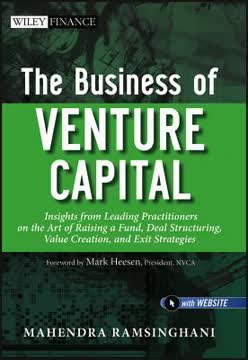
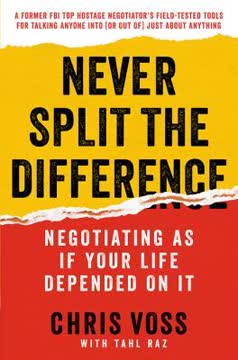




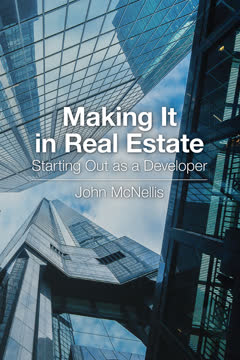

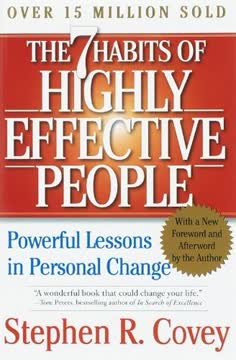
Download PDF
Download EPUB
.epub digital book format is ideal for reading ebooks on phones, tablets, and e-readers.
